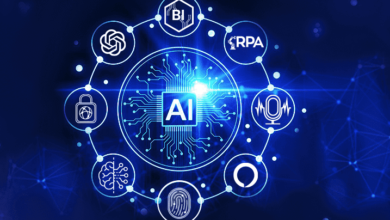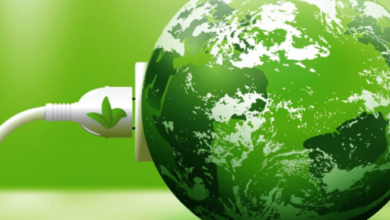5G Networks: Paving the Way for a More Connected World

The world is on the cusp of a technological revolution with the emergence of 5G networks. This new generation of wireless technology promises to reshape industries, redefine connectivity, and open the door to innovations that were once unimaginable. With faster speeds, lower latency, and the capacity to connect millions of devices simultaneously, 5G is more than just an upgrade—it’s a quantum leap forward in communication technology. The implications of 5G will reach far beyond smartphones and mobile internet, touching virtually every aspect of our lives, from transportation and healthcare to entertainment and smart cities.
The Evolution of Mobile Technology: How We Got to 5G
To understand why 5G is so revolutionary, it’s helpful to look back at the evolution of mobile networks. Each generation of mobile technology brought significant improvements, leading up to the transformative potential of 5G:
- 1G: The first generation of wireless technology, introduced in the 1980s, was analog and supported basic voice communication. It marked the beginning of mobile communication but offered slow speeds and limited capabilities.
- 2G: In the 1990s, 2G introduced digital transmission, enabling services like SMS and multimedia messaging (MMS). This generation also provided better voice quality and security, laying the foundation for mobile data.
- 3G: With the rise of 3G in the early 2000s, mobile internet became more accessible, allowing users to browse the web, download apps, and stream media. It offered faster speeds and higher bandwidth.
- 4G: Launched in the late 2000s, 4G delivered high-speed internet with much lower latency than previous generations. It enabled innovations such as video streaming, mobile gaming, and high-definition video calling.
Now, 5G is ushering in an era where mobile networks are not only faster but smarter, more efficient, and capable of handling the data demands of the future.
What is 5G? A Technological Revolution
5G, the fifth generation of wireless technology, represents a significant leap forward in terms of speed, capacity, and reliability. It’s designed to address the growing need for data-driven applications and to connect everything from smartphones to industrial machinery. Unlike previous generations that focused primarily on improving mobile communication, 5G is about creating an ecosystem that can support a wide range of industries and use cases.
There are three core elements that define 5G networks:
- Enhanced Mobile Broadband (eMBB): This component focuses on faster data speeds and increased capacity for high-bandwidth applications like video streaming, virtual reality (VR), and augmented reality (AR). With eMBB, 5G can deliver download speeds up to 100 times faster than 4G.
- Ultra-Reliable Low-Latency Communication (URLLC): One of the most groundbreaking features of 5G is its incredibly low latency, as low as 1 millisecond. This makes real-time communication possible, which is essential for applications like autonomous driving, remote surgery, and industrial automation.
- Massive Machine Type Communication (mMTC): 5G has the ability to connect millions of devices simultaneously, making it the foundation for the Internet of Things (IoT). This will enable smart cities, connected homes, and smart manufacturing processes.
How 5G Works: A Closer Look at the Technology
5G networks are powered by a combination of advanced technologies that enhance their capabilities. These include:
- Millimeter Waves: While previous mobile networks used lower frequency bands, 5G operates on higher frequency bands, known as millimeter waves, which offer faster speeds but have shorter ranges. This requires the deployment of more small cell towers to ensure consistent coverage.
- Small Cells and Beamforming: Small cell infrastructure is a key component of 5G. These are mini cell towers that can be installed on buildings, lampposts, or even inside homes. Beamforming technology allows 5G to direct signals more efficiently, reducing interference and boosting performance in crowded areas.
- Massive MIMO (Multiple Input, Multiple Output): Massive MIMO is a technology that uses multiple antennas to transmit and receive data simultaneously. This increases network capacity, allowing more devices to connect without slowing down the network.
- Network Slicing: 5G introduces the concept of network slicing, which allows carriers to create customized virtual networks for specific applications or industries. For example, a hospital could have a dedicated slice for medical devices, ensuring reliable connectivity with zero interference.
5G’s Impact on Key Industries
The capabilities of 5G will have a transformative effect on a wide range of industries, unlocking new opportunities for innovation, efficiency, and economic growth. Here are some of the key sectors that stand to benefit from 5G:
- Healthcare: One of the most exciting applications of 5G is in the healthcare industry. 5G will enable remote surgeries, real-time monitoring of patients through wearable devices, and faster access to medical data. Doctors will be able to perform complex procedures from remote locations using robotic technology connected to 5G networks.
- Transportation: 5G is critical for the development of autonomous vehicles and smart transportation systems. With its ultra-low latency, 5G will enable vehicles to communicate with each other and with traffic infrastructure in real time, reducing accidents and improving traffic flow.
- Manufacturing: The concept of the “smart factory” will become a reality with 5G. Machines will be connected and able to communicate with each other, optimizing production processes and reducing downtime. Predictive maintenance, powered by IoT devices, will allow manufacturers to identify and fix issues before they cause problems.
- Entertainment: The entertainment industry will be revolutionized by 5G, which will enable more immersive experiences. Virtual reality and augmented reality will become mainstream, with seamless streaming of high-definition content. 5G will also allow for more interactive live events and concerts.
- Agriculture: Smart farming, enabled by 5G, will allow farmers to monitor crops and livestock remotely using drones and sensors. Automated equipment will perform tasks like planting, watering, and harvesting, improving efficiency and sustainability.
- Smart Cities: 5G will be the backbone of smart cities, enabling real-time communication between various systems like traffic management, energy distribution, and public safety. Sensors embedded throughout the city will collect and share data, allowing for better decision-making and resource management.
5G and the Internet of Things (IoT): A Connected Future
The Internet of Things (IoT) refers to the network of physical devices—ranging from smart thermostats to connected vehicles—that communicate with each other over the internet. 5G is the key enabler of the IoT, as it provides the speed, capacity, and reliability necessary to support billions of connected devices.
In the era of 5G, IoT will become even more pervasive, transforming industries and daily life. Homes will be smarter, with devices like refrigerators, washing machines, and lighting systems communicating with each other and responding to user preferences. In industries, IoT will enhance productivity, efficiency, and safety by enabling real-time monitoring and predictive maintenance.
Challenges to 5G Implementation
Despite the immense potential of 5G, there are several challenges that must be overcome to ensure its successful implementation:
- Infrastructure Investment: Building 5G networks requires significant investment in infrastructure, including small cell towers and fiber optic cables. In rural areas, where the population density is lower, this can be cost-prohibitive, potentially delaying 5G deployment in less urbanized regions.
- Spectrum Availability: 5G requires a wide range of frequency bands to function effectively. Governments and regulatory bodies need to allocate the necessary spectrum to ensure that 5G networks can operate without interference. In many countries, this process is still underway, creating potential delays.
- Security Concerns: With more devices connected to 5G networks, cybersecurity becomes a critical issue. The increased volume of data, combined with the sensitivity of the industries that will rely on 5G (such as healthcare and finance), makes securing these networks a top priority.
- Health and Environmental Concerns: Although studies show that 5G is safe and falls well within international radiation limits, there are ongoing concerns about the long-term health effects of exposure to higher frequency radiation. Additionally, the environmental impact of manufacturing and maintaining millions of connected devices has raised sustainability questions.
The Global 5G Rollout: Where Are We Now?
Countries around the world are racing to deploy 5G networks. Leading the way are nations like South Korea, the United States, and China, where major cities are already experiencing widespread 5G coverage. Europe is also making significant strides, with countries like the United Kingdom, Germany, and France rolling out 5G services.
In developing countries, 5G deployment is still in its early stages, but there is significant potential for 5G to bridge the digital divide by bringing high-speed internet to underserved areas. Governments and private companies are working together to accelerate 5G deployment in these regions, which could unlock economic opportunities and improve access to education and healthcare.
The Future of Connectivity: What’s Next After 5G?
While 5G is just beginning to roll out, researchers and engineers are already looking ahead to the next generation of wireless technology. 6G is expected to take connectivity even further, with speeds up to 100 times faster than 5G and latency approaching zero. However, 6G is still in the conceptual phase, and it will likely take at least another decade before it becomes a reality.
In the meantime, 5G will continue to evolve and expand, driving innovation in industries and enhancing daily life for millions of people around the world. Its potential to reshape the global economy is vast, with analysts predicting that 5G could contribute over $13 trillion to the global economy by 2035.
Frequently Asked Questions About 5G
- How fast is 5G compared to 4G?
5G can be up to 100 times faster than 4G, with peak speeds exceeding 10 Gbps. This allows for faster downloads, seamless streaming, and the ability to run complex applications like VR and AR in real time. - Is 5G safe for human health?
Yes, 5G is safe. Extensive research has shown that the radiation emitted by 5G networks falls well within international safety guidelines, and there is no scientific evidence to suggest that 5G poses health risks. - What makes 5G different from previous generations?
5G is not just about faster speeds. It also offers ultra-low latency, greater capacity, and the ability to connect millions of devices simultaneously. These features make 5G the foundation for technologies like autonomous vehicles, smart cities, and IoT. - When will 5G be available everywhere?
While 5G is already available in many major cities around the world, it will take several more years to achieve global coverage, particularly in rural areas. The timeline for full deployment varies by country and region. - How will 5G affect my data plan?
As 5G becomes more widespread, carriers are expected to offer new data plans to accommodate the higher data consumption that comes with faster speeds and more connected devices. However, the specifics will vary depending on the carrier. - What industries will benefit the most from 5G?
Industries like healthcare, transportation, manufacturing, and entertainment are expected to see the greatest benefits from 5G, as it will enable new applications and improve efficiency across a wide range of sectors.
Conclusion
5G networks are not just an incremental improvement in mobile communication—they represent a seismic shift in how we connect and interact with the world. From enabling smart cities to powering the Internet of Things, 5G is laying the foundation for a more connected, intelligent, and efficient future. As the technology continues to roll out globally, its impact will be felt across industries, economies, and societies, ushering in a new era of innovation and opportunity.



